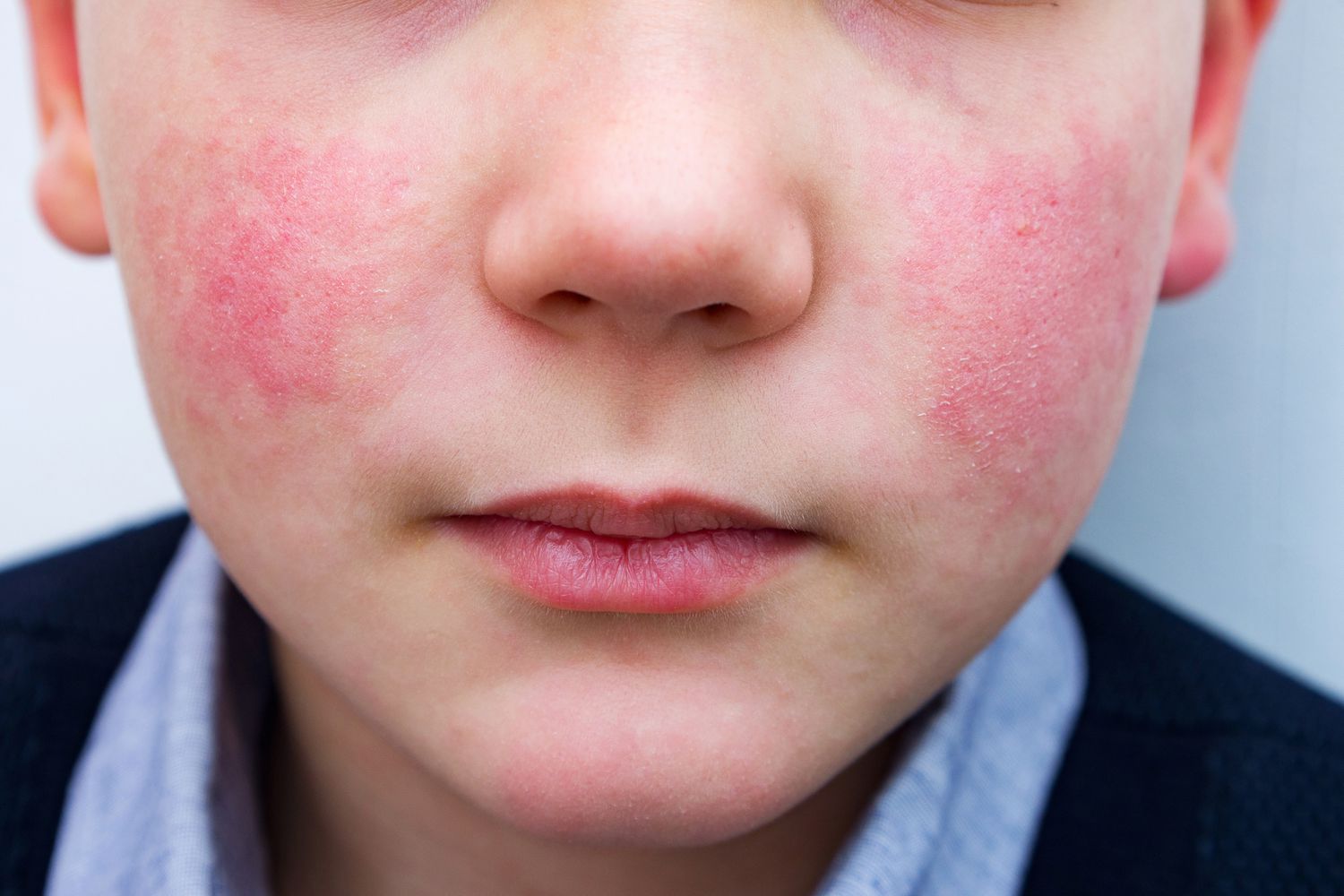CDC Issues Warning on Surge in Human Parvovirus, Known as 'Slapped Cheek' Virus

The Centers for Disease Control and Prevention (CDC) has issued a health alert warning about a jump in cases of human parvovirus B19. Cases of the virus, also known as 'fifth' or 'slapped cheek' disease—a nod to the hallmark rash it can cause—have increased among people of all ages.
According to the alert, 14 European countries have reported “unusually high numbers of cases.” While the CDC doesn’t directly track fifth disease cases in the U.S., it said that it has received reports of more parvovirus cases than usual.
Specifically, the proportion of people with IgM antibodies, which indicate that someone was recently infected, increased from under 3% from 2022 to 2024 to 10% in June.
Children between the ages of five and nine had the most significant spike in cases, from 15% from 2022 to 2024 to 40% in June. The CDC noted higher-than-expected cases of parvovirus in pregnant people, including those that resulted in fatal complications for the fetus.
“While the infection is usually mild, it can be more concerning for certain groups, such as pregnant women or individuals with weakened immune systems,” Andrew J. Carlson, MD, medical director of the Division of Primary Care at Connecticut Children’s, told Health.
Here’s what you need to know about parvovirus B19, including why cases are currently surging.
Human parvovirus B19 is a common respiratory disease that usually infects children. It’s more common in children because they don’t yet have immunity to it, Susan Kline, MD, MPH, a professor of medicine in the Division of Infectious Diseases and International Medicine at the University of Minnesota Medical School, told Health.
About 50% of people get fifth disease by age 20, which protects them from future infection in adulthood.
“This is a contagious viral illness that spreads primarily through respiratory droplets,” Kline said. “If you’re not immune to the illness, you can catch it by being near an infected person when they’re coughing or sneezing.”
The “fifth disease” nickname is a historical reference, according to Mark Hicar, MD, PhD, chief of pediatric infectious diseases at the University at Buffalo Jacobs School of Medicine and Biomedical Sciences in New York. “Many years ago—late 19th century—before the bacteria and viruses were figured out, the common rash illnesses of children were given numbers,” he told Health. “Only parvovirus B19 still retains this reference for unknown reasons.”
Some people with parvovirus B19 may not experience any symptoms, while others can have varying side effects.
“The most striking symptom often includes a red rash on both cheeks—the ‘slapped cheek rash’—followed by a lacy rash on the trunk that spreads to the extremities,” Katie Lockwood, MD, a pediatrician at Children’s Hospital of Philadelphia, told Health.
In addition to a red rash, symptoms can include:
While parvovirus B19 cases are usually mild for children and healthy adults, it can cause serious complications that impact the nerves, joints, or blood. People at high risk for complications include those with weakened immune systems or certain blood disorders like sickle cell disease.
A parvovirus B19 infection during pregnancy can be serious: The virus can spread to the baby, potentially leading to miscarriage, Hicar said.
It’s not entirely clear why cases are increasing, but there is speculation that it’s tied to the COVID-19 pandemic. “Many children and adults have had less exposure to common viruses during the pandemic due to social distancing and masking,” Carlson said. “With these measures’ relaxation, viruses kept at bay are now circulating more freely.”
Parvovirus B19 also tends to have “cyclical outbreaks,” in which cases ebb and flow, he said. The surge could simply “be a natural peak in its cycle,” he added.
Unfortunately, things may get worse before they get better. “Parvovirus B19 is spread by respiratory droplets, like many other common viruses, so we do often see these increase when children gather together at the return to school,” Lockwood said. “It’s possible that we will see an increase in parvovirus B19 as children return to school in the next few weeks.”
There’s “no specific treatment” for people with mild illness resulting from parvovirus B19, according to Kline. Lockwood said doctors may recommend supportive care, such as over-the-counter medications to control fever and ease pain.
But if someone develops severe anemia from parvovirus B19, they may need a red blood cell transfusion or IV immunoglobulin treatment, Lockwood added.
The risk of getting parvovirus B19 can usually be lessened by practicing good hand hygiene and avoiding people who are obviously sick, Carlson noted. She recommended encouraging kids to wash their hands well. If you’re pregnant and know you have had exposure to the virus, Kline advises contacting your OB/GYN so that they can monitor you and your baby closely.
Kline said that parents shouldn’t panic about the increase in parvovirus B19 but should be aware that it’s out there. “Be on the lookout for signs of the illness,” she said. “If your child develops it, notify their healthcare provider.”




